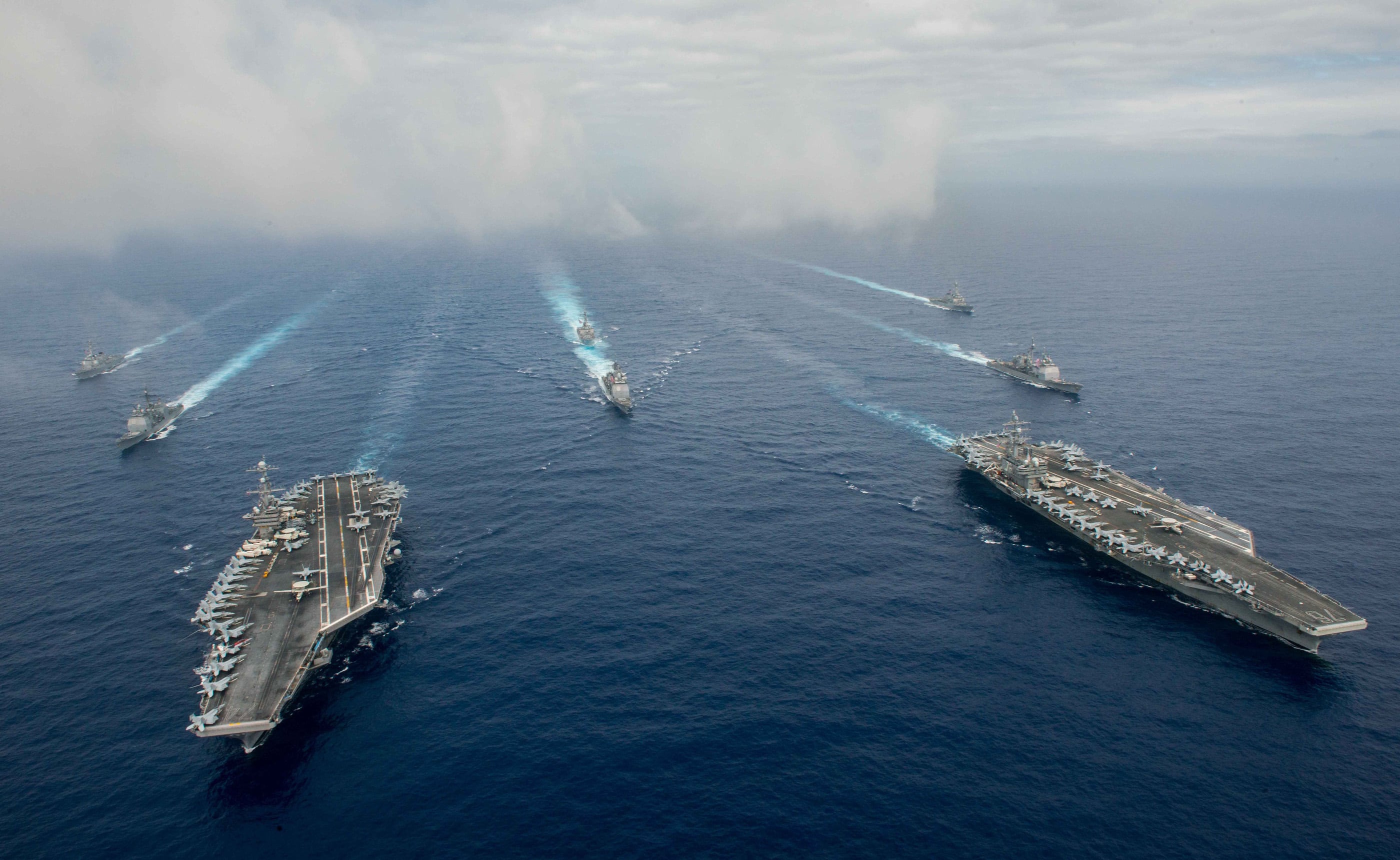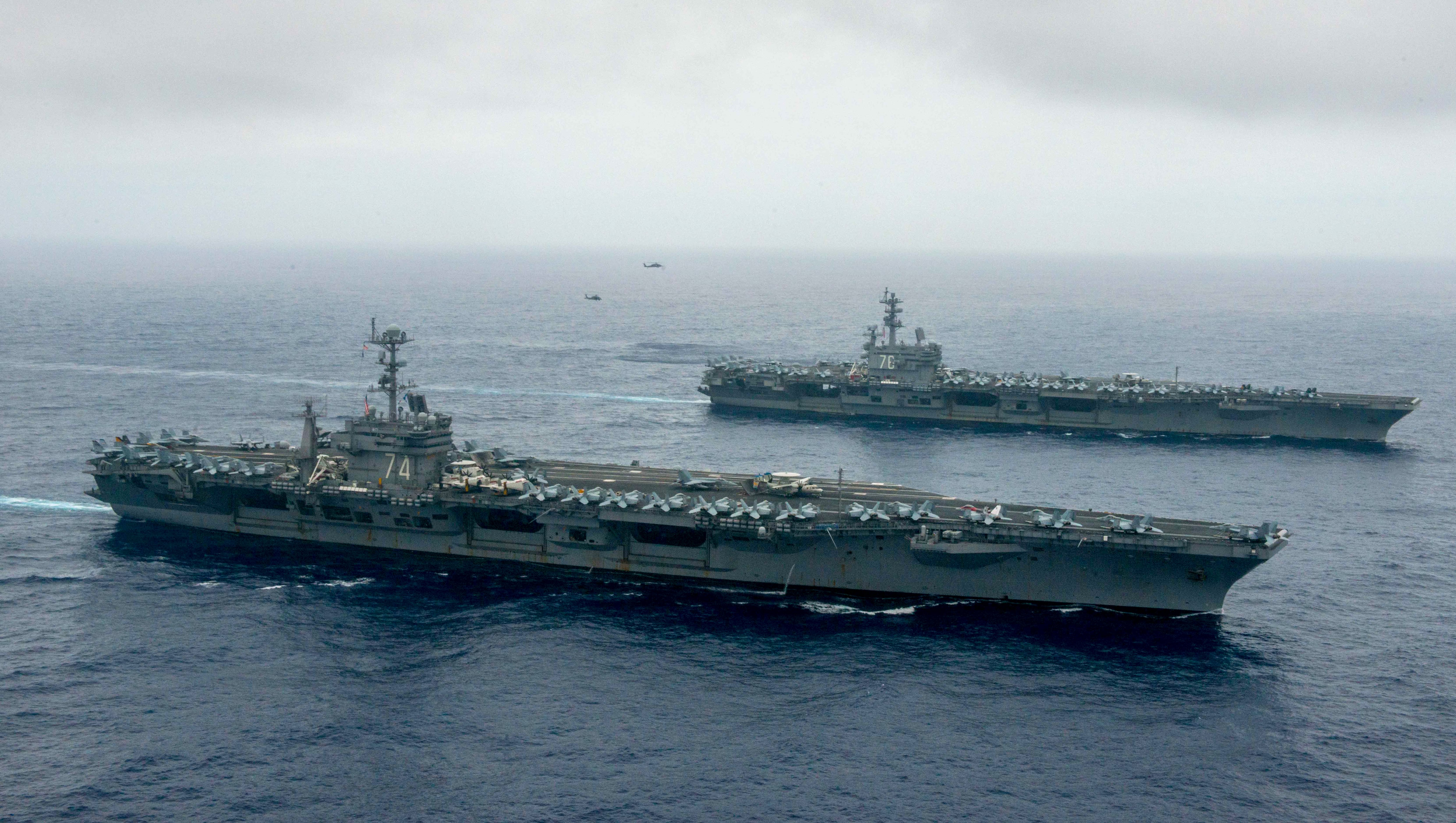TOKYO — Warships from a record 26 nations — including the United States and China — converge near Hawaii this week for a five-week series of exercises to promote international security, goodwill and cooperation on the high seas.
Well, good luck with that.
The massive Rim of the Pacific (RIMPAC) war games will take place amid increasing tension and competition in waters of the Asia-Pacific region and will include warships from at least seven nations with competing claims or interests in the region.
China will take part in the RIMPAC exercise, held every two years, for just the second time.
Some members of Congress and the U.S. defense community have called for the invitation to be withdrawn because of China’s assertive territorial claims and island-building program in the South China Sea.
China has claimed sole ownership over virtually all of that key waterway, through which passes an estimated $5 trillion in annual trade. In just the past two years, China has built at least seven landfill islands in the South China Sea, including some with military-grade runways, deep-water ports and extensive land facilities.
The U.S. does not support individual sovereignty claims, but the Obama administration has expressed concern that China could use the islands to restrict air and sea navigation. China has promised not to do that.

The Nimitz-class aircraft carriers USS John C. Stennis (CVN 74) (L) and USS Ronald Reagan (CVN 76) conduct dual aircraft carrier strike group operations on June 18, 2016, in the Philippine Sea in support of security and stability in the Indo-Asia-Pacific. (Photo by Specialist 3rd Class Jake Greenberg/U.S. Navy via Getty Images)
Photo Credit: MC3 Jake Greenberg/US Navy via Getty Images
The aircraft carrier USS John C. Stennis, which will play a major role at RIMPAC 2016, recently completed a three-month patrol through the South China Sea, during which it was tailed by Chinese warships around the clock.
Although the ships did not interfere with Stennis’ operations, Chinese authorities refused permission for the Stennis and its escort ships to make a routine port call in Hong Kong. The refusal came just weeks after U.S. Defense Secretary Ash Carter used a high-profile visit to the Stennis to criticize Chinese conduct.
RIMPAC is the largest and, arguably, most important naval exercise in the world. This year’s event will take place from Thursday through August 4 and will include first-timers Germany, Italy and Denmark.
Altogether, 45 ships, five submarines, 200 aircraft and 25,000 personnel will take part in the event, which will include training in surface warfare, air- and missile-defense, amphibious operations and other maritime skills.
With five vessels, including a hospital ship, China’s contingent will be one of the largest. The ships will take part in humanitarian assistance and disaster relief, submarine rescue and counter-piracy training, but will be excluded from combat-related drills.
By law, the U.S. military is not permitted to provide or engage in combat-related training with China’s military.
Although Carter has criticized Chinese conduct in the Asia-Pacific, he has defended the decision to invite China to this year’s exercise. Participation in RIMPAC contributes to "relationships that are critical to ensuring the safety and security and peace of the region's sea lanes," Carter said in a speech this year.
Several Chinese ships took part in RIMPAC in 2014 without incident. But this year’s event could reflect growing tensions.

The Nimitz-class aircraft carriers John C. Stennis, center, and Ronald Reagan steaming together in the Philippine Sea in a massive show of force two weeks after Stennis left the South China Sea.
Photo Credit: MC3 Jake Greenberg, Navy
Malaysia, Brunei and the Philippines also will be at RIMPAC 2016, and each has overlapping claims with China in the South China Sea. An international tribunal is expected to rule soon on a legal challenge brought by the Philippines against China’s claims in the sea. The ruling could come during the RIMPAC exercise, and China already has promised to ignore it.
Japan will send one of its newest and largest warships to RIMPAC, and a vice admiral in Japan’s Maritime Self Defense Force will be one of the exercise’s senior commanders. Japan is engaged in a tense territorial dispute with China over the uninhabited Senkaku Islands in the East China Sea, and has accused Chinese warships of improperly sailing into or near Japanese territorial waters twice in recent months.
Inviting China to RIMPAC 2016 sends the wrong message, said Grant Newsham, senior research fellow at the Japan Forum for Strategic Studies, in Tokyo.
"Inviting the PRC (People’s Republic of China) to RIMPAC 2014 was equally contentious … but the idea was that this would improve Chinese behavior," Newsham said. "We've now got two years of empirical evidence to determine if PRC behavior has improved. It hasn't."
Withdrawing China’s invitation would have created other problems, said Rob Ayson, professor of strategic studies at Victoria University in Wellington, New Zealand.
"Almost all exercises in the Asia-Pacific — and especially large ones involving the major powers, of which RIMPAC is the leading example — are becoming more important," Ayson said. "A dis-invitation to China could signal to other participants that they were being expected to take sides, and that might make them think twice."
Regardless, China’s growing military power and assertiveness reflects a "new normal" that the United States and other maritime powers will have to reckon with, said Alessio Patalano, senior lecturer in war studies at King's College, London, and a specialist in East Asia maritime security issues.
"There will be discomfort," Patalano said. "But that should settle into an understanding that at sea, competition and a degree of engagement coexist."




